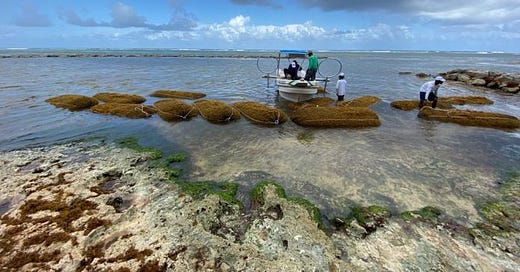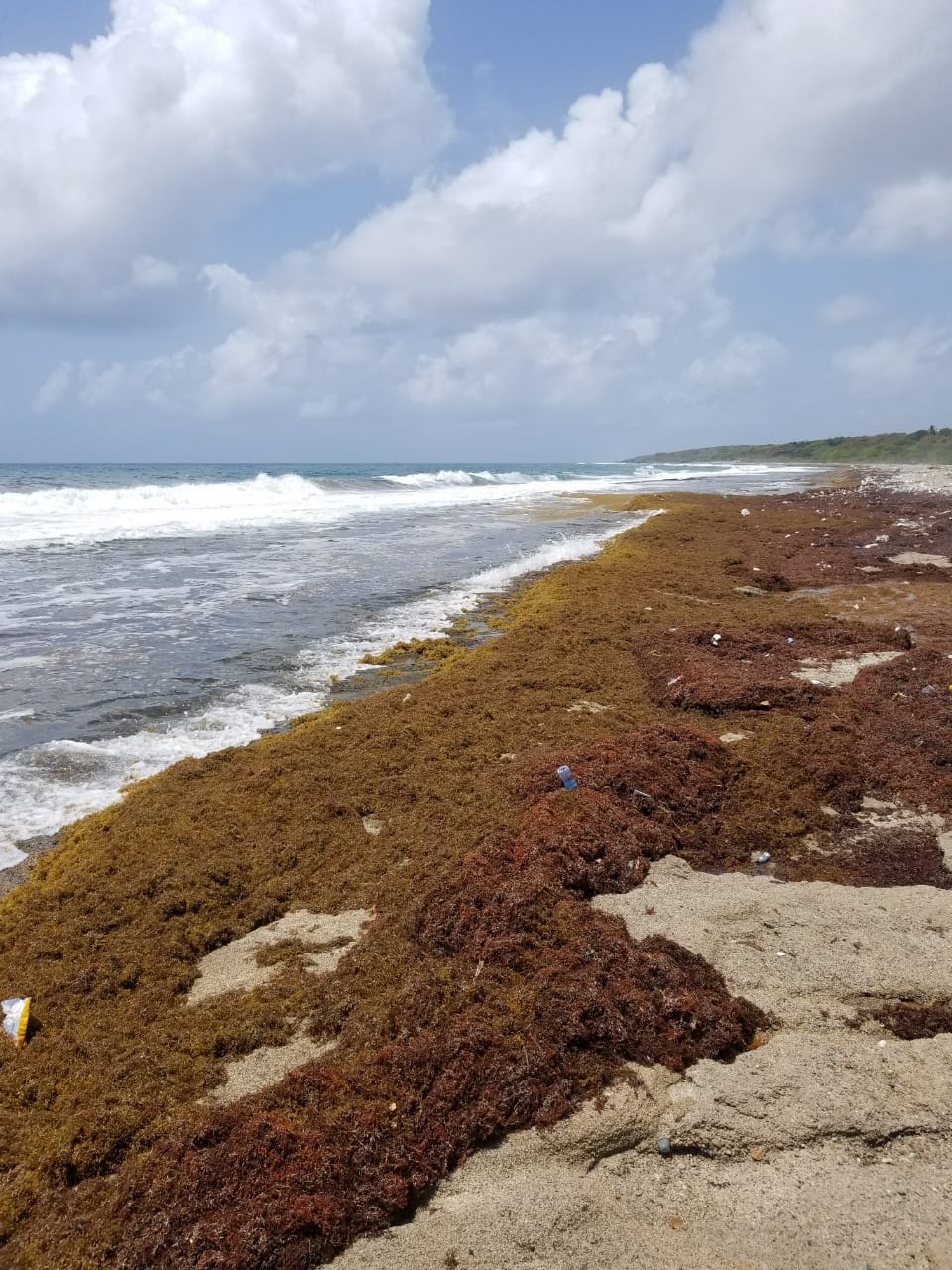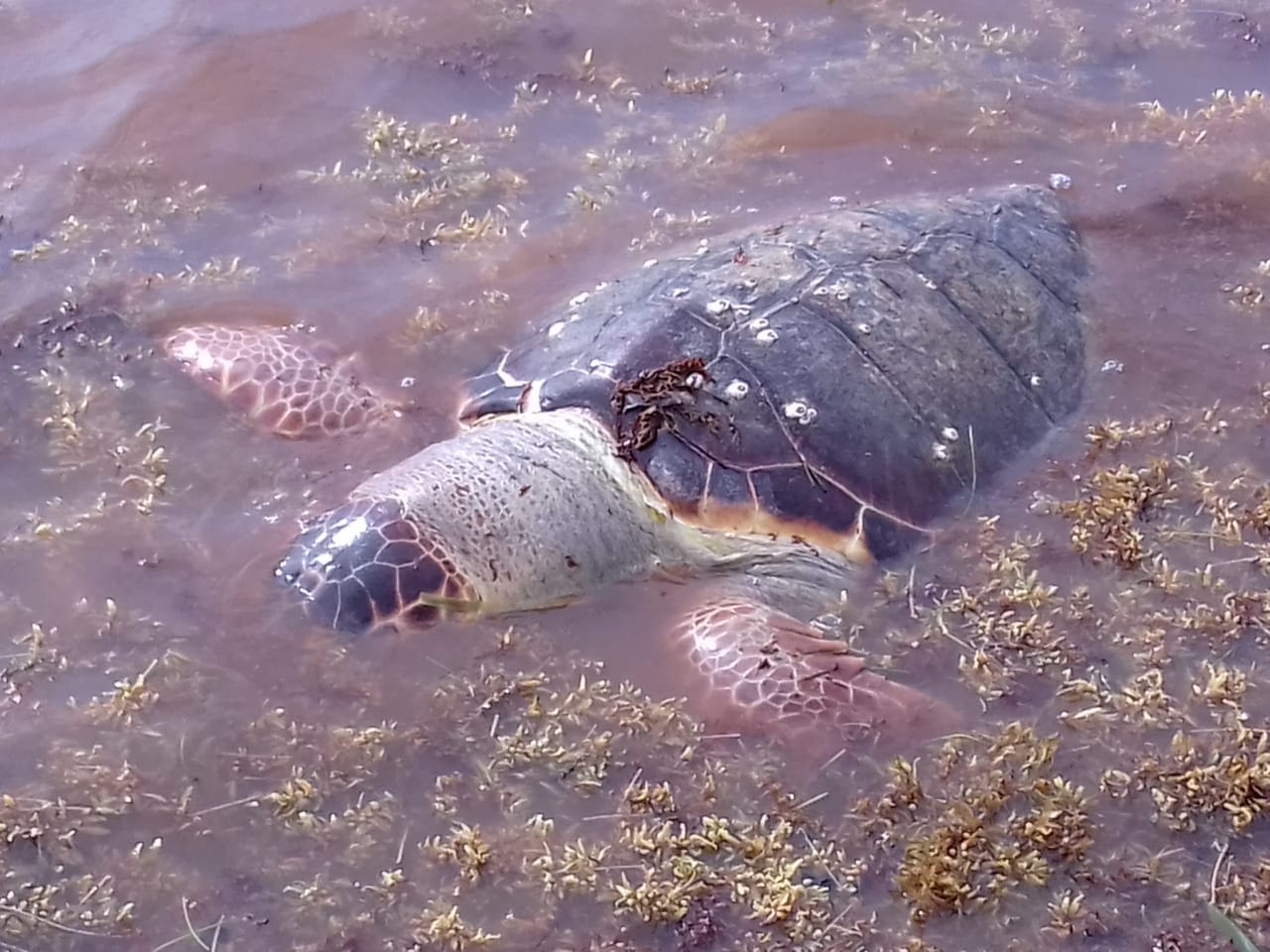Is the sargassum the curse of the Caribbean countries or is there something we can do about it?
Reduce Entropy #14: Why this algae is so dangerous, spoiler alert, not because it is a threat to the esthetics of hotels and resorts.
Wherever you're from, I'm sure by now you've seen or heard at least once of an algae that is wreaking havoc and being the misfortune of hotel chains all over the Caribbean, Greater and Lesser Antilles, and even in South America.
I am, of course, talking about Sargassum natans or Fucus natans, better known as sargassum.
But what exactly do we know about sargassum?
Sargasso is a seaweed native to the Atlantic Ocean, specifically, the Sargasso Sea, which due to unnatural reasons (aka Human Activity, of course) has moved through different regions of the world, constantly reaching the coasts of countries that depend mainly on their beaches for their livelihood.
Among the countries that have been most affected are the Dominican Republic, Antigua and Barbuda, Barbados, Belize, Jamaica, Cuba, Mexico, Puerto Rico, and Guadeloupe.
Do you know what all these countries have in common? They depend economically, to a great extent, on tourism for the beauty of their beaches and landscapes.
What makes sargassum so life-threatening?
The fact that it ruins the aesthetics and the vacations of visitors is a strong enough reason to scare away tourists. However, the danger of this macroalgae is not only because of this.
When the sargasso reaches the coasts it decomposes, generating in this process toxic gases and bad odor, added to the fact that they are a transport for heavy metals that contaminate the land and water.
In addition, they are a major threat to marine life and corals, because they can decrease oxygen concentrations in the water and block sunlight, which is vital for marine ecosystems. Also, large sargassum shadows can function as nets in which marine species such as fish and turtles become trapped.
Therefore, they pose a threat to biodiversity by endangering even more species such as Carey and green turtles.
What if we turn things around?
Despite all these disadvantages, sargassum has a high hidden potential, some of the benefits that are attributed to it are:
It is shelter and food for marine species such as turtles that feed on algae and use it to protect themselves from natural predators.
It has qualities that can be used as fertilizer, biofuel, and as raw material in cosmetics and pharmaceuticals.
If it has so many positive characteristics, why has it become such a threat?
The main cause has been the large volume of sargassum that has been arriving steadily for more than 5 years, caused by elevations in the temperature of the ocean's surface waters.
In the end, it all ends up being blamed in some way on global warming and climate change.
What is being done to solve these problems?
Lack of knowledge can result in aggravating environmental problems and unfortunately, this case is no exception.
To solve the problem of tons of sargassum carcasses, hotels have proceeded with two main corrective activities:
Burying the sargassum
Storing it in open-air landfills
Both measures compete with which is the most harmful to the environment because these "solutions" do not stop the decomposition process and the consequences it brings. In addition, large machinery and equipment are used to collect the algae from the coasts, altering the ecosystem and threatening the life that inhabits them.
A viable and sustainable alternative
In the Dominican Republic, there is a sustainable alternative that provides a solution to the collection of sargassum prior to its decomposition on the coasts, SOS Carbon.
SOS Carbon is a Dominican proposal co-created by Andrés Bisonó León and MIT professionals, which consists of the collection of sargassum on the coasts prior to its arrival, preventing the main negative effects of this macroalgae.
The collection is carried out by its LCM (Littoral Collection Module), artisanal boats with nets that collect large quantities of Sargassum while sailing. This represents a low-cost alternative, reduced environmental impact, and benefits neighboring communities by instructing local fishermen and incorporating them into the collection activities.
In addition to that, the Dominican company has partnerships with institutions researching the properties of sargassum around the world, to take full advantage of the potential of these algae.
I had the opportunity to work for a month with them, and it is one of the best alternatives to the problem that sargassum represents.
That's all for now, see you in the next one, my dearest muyayos.
Jr Nicolas from Reduce Entropy🌎
Other episodes you might be interested in







